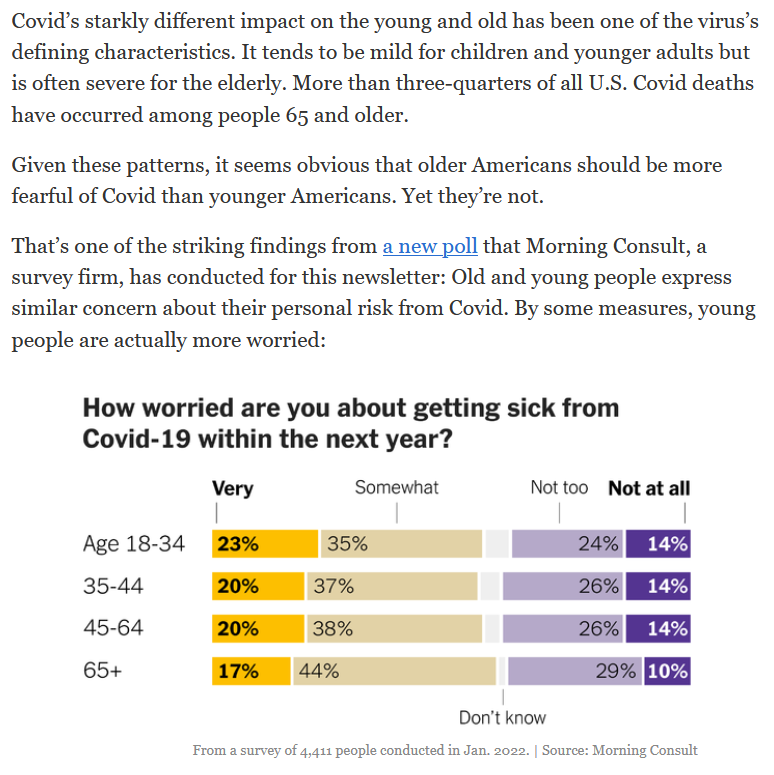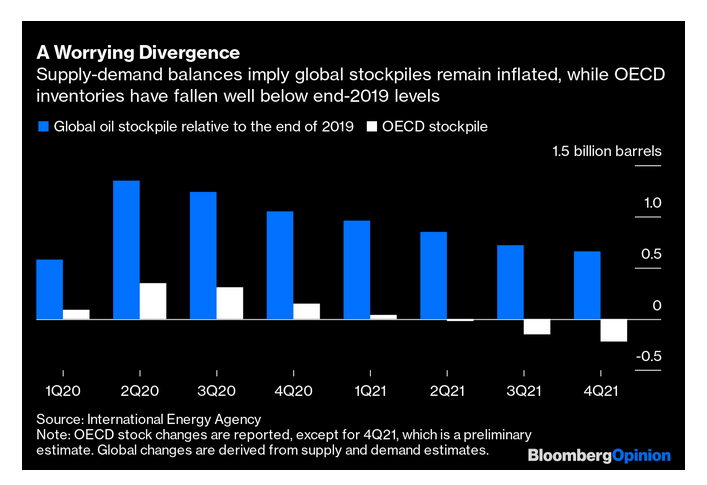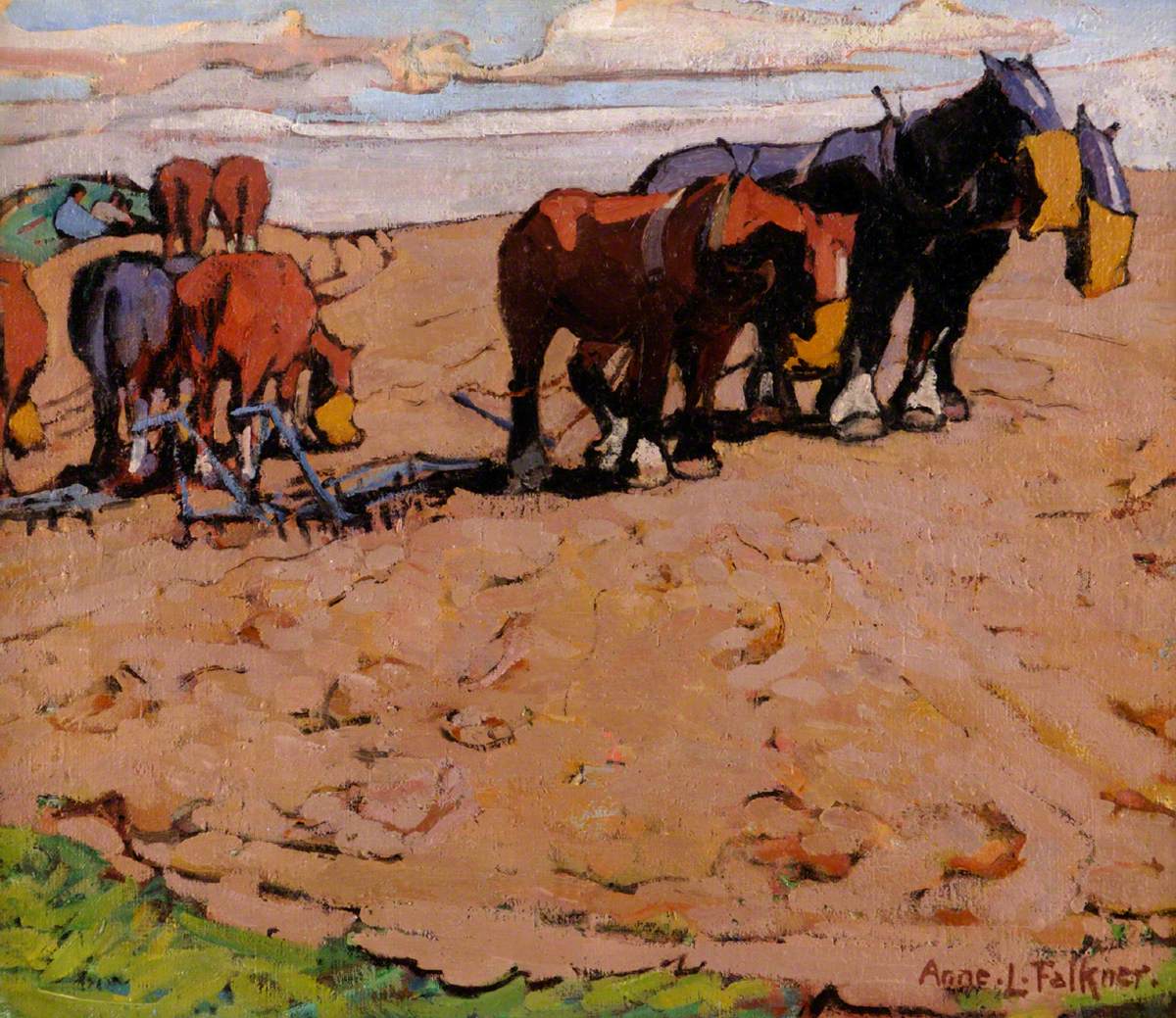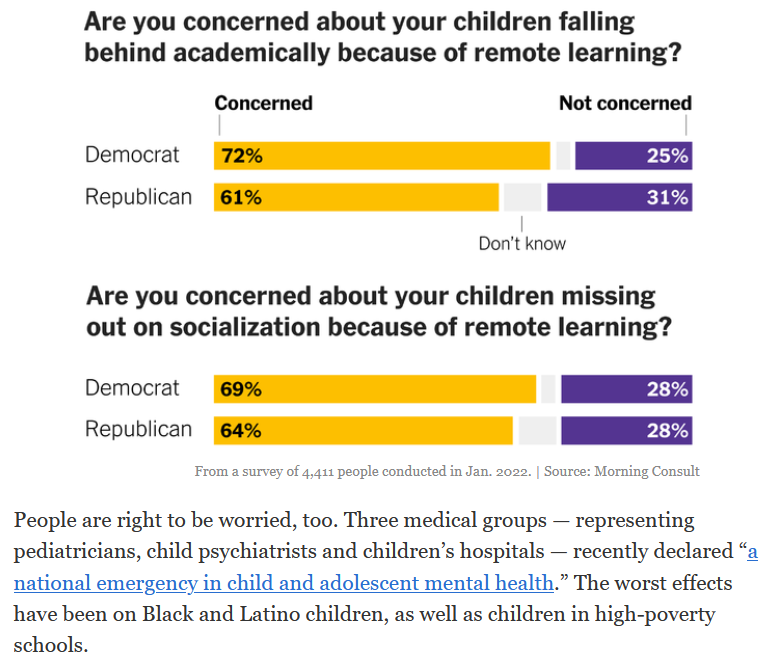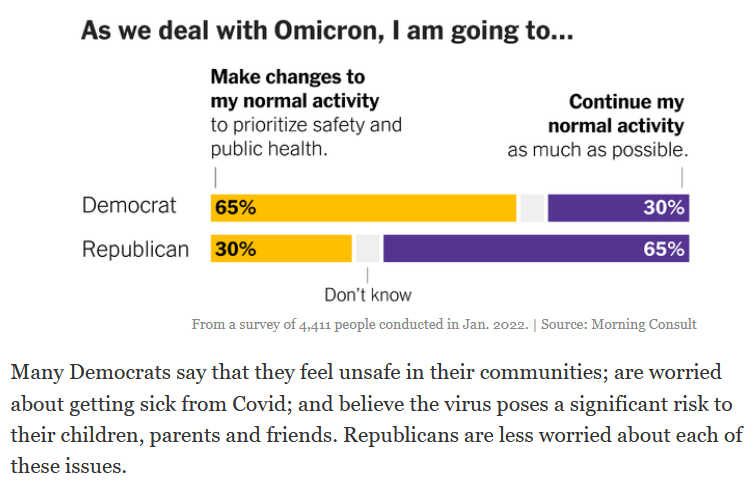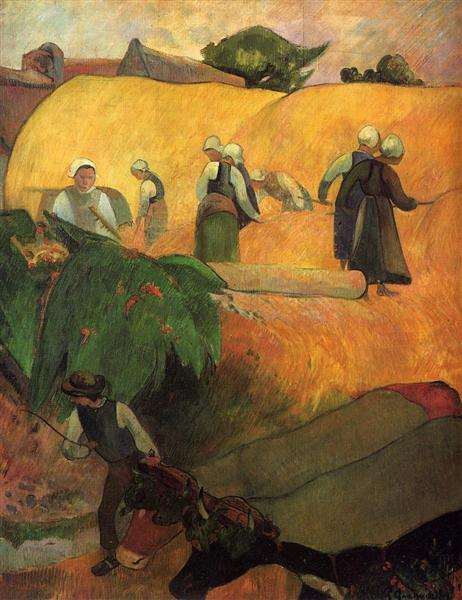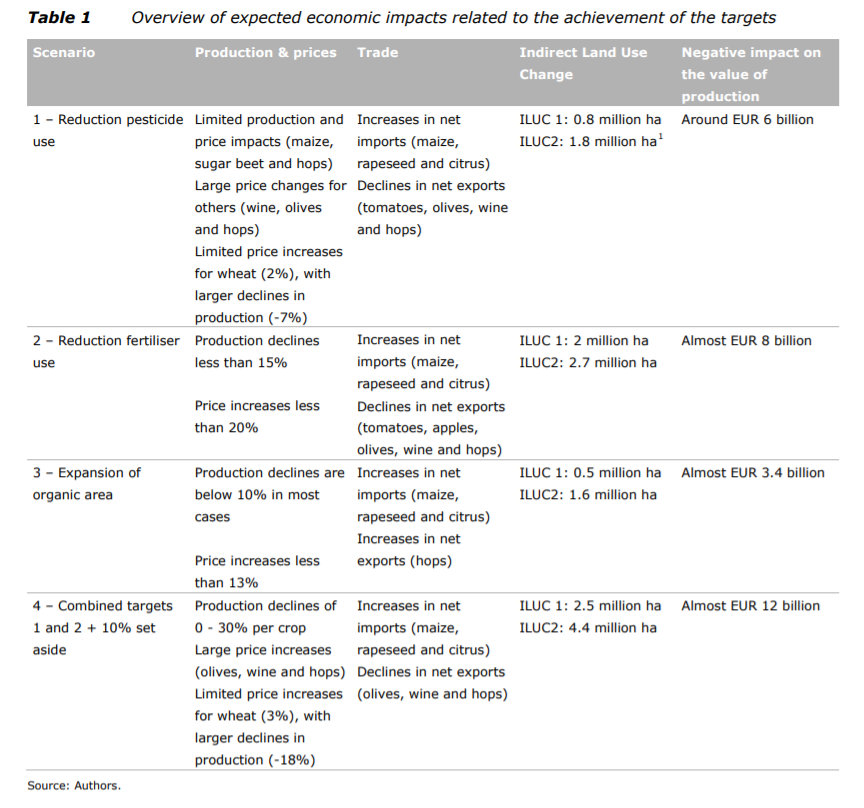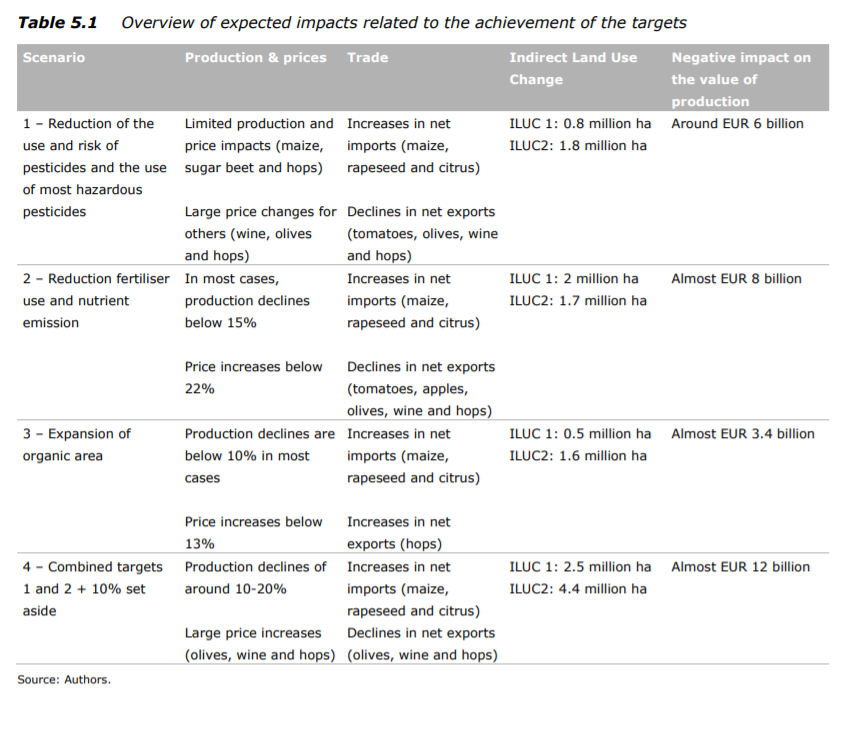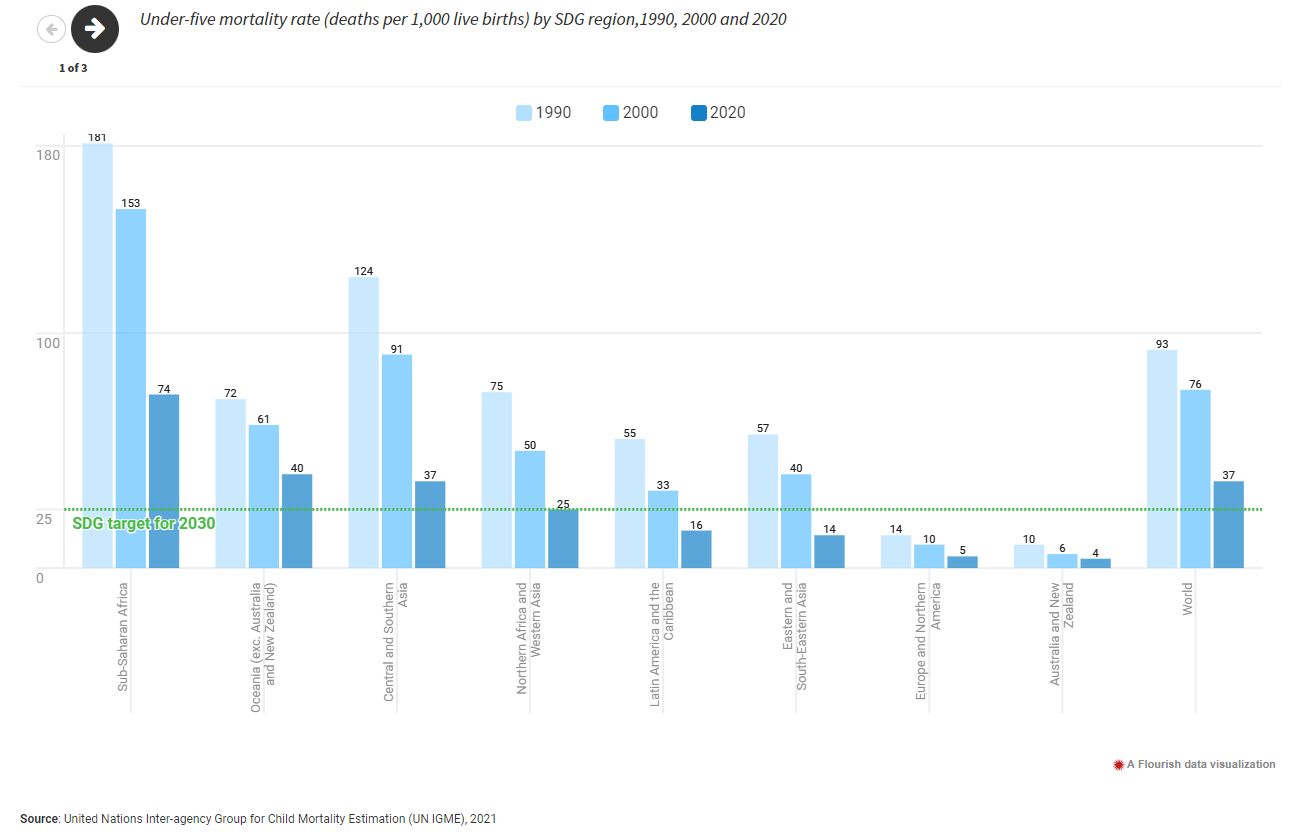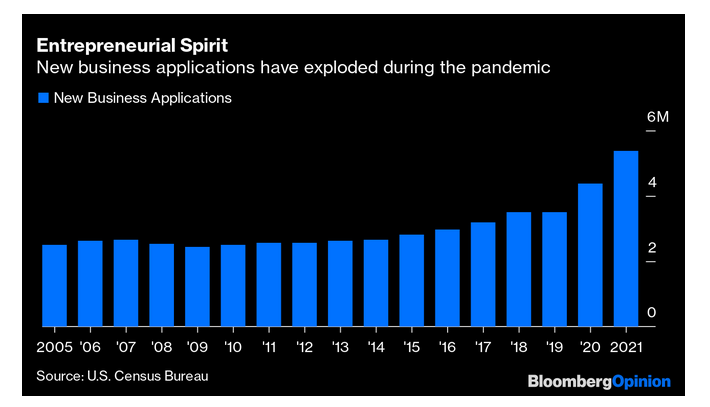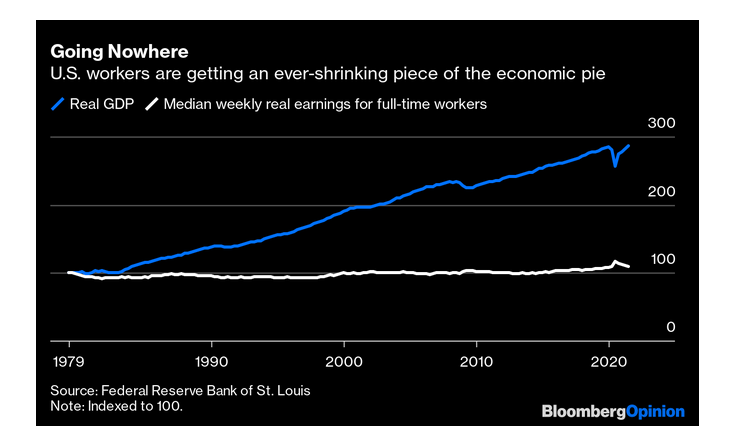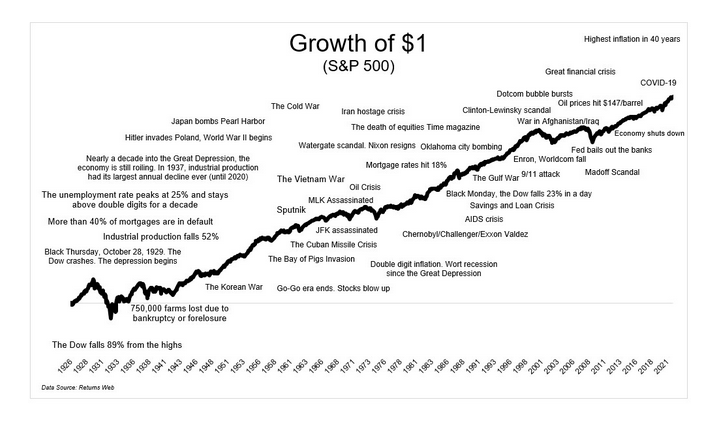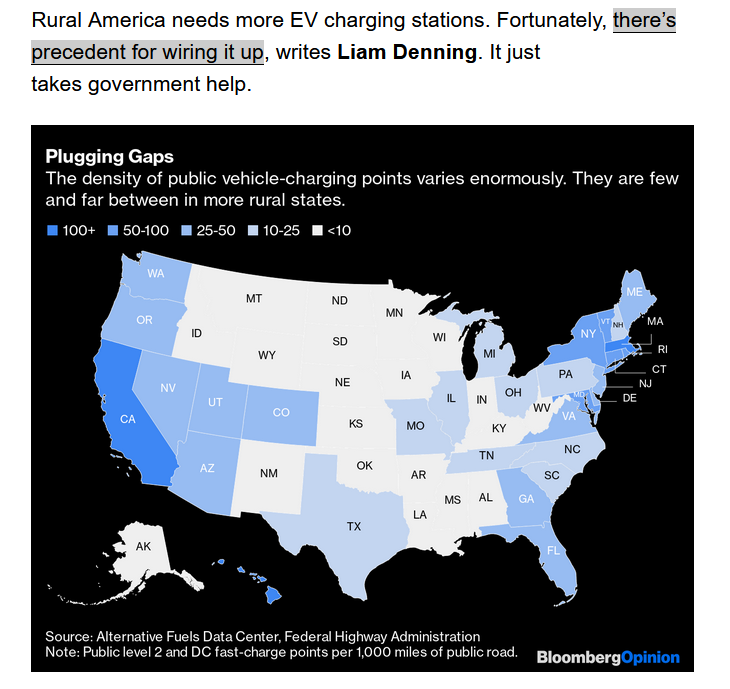|
You
can also view the message online
|
|||||||||||||||||||||
 Châtenay-Malabry (FR - 92290), February 07, 2022 EFITA newsletter / 1025 - European Federation for Information Technology in Agriculture, Food and the Environment Do not miss the Virus Jokes in English and French The informatique-agricole.org site now offers you the possibility of subscribing the RSS feeds of its two newsletters See RSS feeds to implement to ensure that you continue to receive this newsletter To unsubscribe this newsletter, please contact me directely: guy.waksman(a)laposte.net if this link Unsubscribe does not work. Please note that I changed the presentation of the links that are embedded in the name of the web service. 
To correspond with me (GW), please use this address: guy.waksman(a)laposte.net To subscribe the efita newsletter (please ask your friends and colleagues to test this link) Efita Newsletters subscription Before computers Weekly newsletters about ICT in Agriculture in English and French Both newsletters have around 14000 subscribers. >>> Last weekly EFITA Newsletters in English (created in 1999) Efita Newsletters >>> Last weekly AFIA Newsletters in French (created more than 20 years ago in 1997) Afia Newsletters >>> Statistics for the last efita newsletter >>> Last issue of the afia newsletter >>> Last available satistics for the afia newsletter Ian Housemann and Guy Waksman met last Friday (February 4, 2022) evening at The Bell pub of Chiersley, close to Aylesbury. We wished all the best to our old Efita friends! Powerful sensors on planes detect crop nitrogen with high accuracy Synthetic nitrogen fertilizers transformed agriculture as we know it during the Green Revolution, catapulting crop yields and food security to new heights. Yet, despite improvements in crop nitrogen use efficiency, fears of underperformance spur fertilizer overapplication to this day. Excess nitrogen then ends up in waterways, including groundwater, and in the atmosphere in the form of potent greenhouse gases. Predicting the amount of nitrogen needed by a particular crop in a particular year is tricky. The first step is understanding crop nitrogen status in real time, but it’s neither realistic nor scalable to measure leaf nitrogen by hand throughout the course of a season. In a first-of-its-kind study, a University of Illinois research team put hyperspectral sensors on planes to quickly and accurately detect nitrogen status and photosynthetic capacity in corn. “Field nitrogen measurements are very time- and labor-consuming, but the airplane hyperspectral sensing technique allows us to scan the fields very fast, at a few seconds per acre. It also provides much higher spectral and spatial resolution than similar studies using satellite imagery,” says Sheng Wang, research assistant professor in the Agroecosystem Sustainability Center (ASC) and the Department of Natural Resources and Environmental Sciences (NRES) at U of I. Wang is lead author on the study. .../... See agdaily.com Tackling Traceability is Front of Mind as MyAgData Returns to AgGateway, by Paul Schrimpf, Director of Marketing and Communications AgGateway welcomes the return of MyAgData to the member ranks. Launched as a company in 2012, MyAgData's Field Portal application collects, translates, organizes, and delivers field data for crop insurance, farm programs, private insurance products, carbon capture, crop traceability and food safety. MyAgData is also the first and only commercial provider of digital acreage reports, which was designed to help farmers avoid the pain point of time-consuming, manual compilation and delivery of FSA field documentation. MyAgData’s previous stint as an AgGateway member was a fruitful experience, and the company uses the ADAPT plugin for elements of its precision ag data collection system. .../... See aggateway.org Ploughing Match, by Charlotte M. Laurie (active 1960s onwards) - Suffolk Punch Heavy Horse Museum FutureFarming > The autonomous John Deere from a farmer’s perspective: Part II What do farmers think of the autonomous John Deere? What impact will it have on their farm? Future Farming asks farmers around the world. This week: Cassio de Oliveira Kossatz and Monique Martins Lima Silveira from Brazil. > Drones: DroneDeploy, Farmers expect drone spend to rise in 2022 DroneDeploy reports the majority of its users in agriculture aim to use drone technology in the future primarily to increase productivity. > Field robots: Kubota and Tesla co-founder to develop robots for vineyards Kubota has enlisted Tesla co-founder and engineer Ian Wright to develop field robots controlled by artificial intelligence. > Drones: Russian project explores use of drones in rice growing Drones were used for seeding, spraying and fertilising in order to reduce inputs and increase yields in rice growing. > Autonomous tractors: What autonomous tractors are for sale in 2022 Future Farming is aiming to expand its autonomous tractors catalogue and buying guide drastically. > Video: Robotti suitable as labor replacement Robotti acts as a labor replacement by sowing fertilizer, an advantage for the farmer. > Autonomous John Deere, a farmer’s perspective What do farmers think of the autonomous John Deere? What impact will it have on their farm? Future Farming asks farmers around the world. Read more > > Affordable weeding robot on its way ROMI and Sony are nearing the end of the prototype phase for their affordable autonomous robot for mechanical precision weeding. Read more > > Brussels sprout robot: an insightful first year About a year ago, the ASH-4 fully automatic sprout picker from Dutch harvesting equipment manufacturer Tumoba made its debut. Lets's look back. Read more > > Refining seed and fertiliser applications for higher yields We visit Kingara Farms in South Australia. This farm uses a range of precise applications to optimise the use of its different types of soils. It’s a constant search for more efficiency, higher yields and lower costs, Director Tim Polkinghorne explains. > nMETOS: The revolution of the connected fields The two keystones of nMETOS are sustainability and the real needs of the farmer. The farms require a highly reliable sensor set, precise data reachable within seconds, long-range communications, and an extended battery lifetime. We managed to combine all in one weather station - nMETOS. >Field robots: Concentrated light to weed better than other technologies Earth Rover is working on three different field robots including its Terrier rover for selective weeding with concentrated light. > Harvesting: Brussels sprout picking robot: an insightful first year About a year ago, the ASH-4 fully automatic sprout picker from Dutch harvesting equipment manufacturer Tumoba made its debut. > Fertilising: Better global nitrogen fertiliser balance in grain needed Consideration of all costs and benefits of nitrogen fertiliser leads to different choices in grain cultivation worldwide, new research shows. > Autonomous tractors: The autonomous John Deere from a farmer’s perspective: Part II What do farmers think of the autonomous John Deere? What impact will it have on their farm? Future Farming asks farmers around the world. > Drones: DroneDeploy: Farmers expect drone spend to rise in 2022 DroneDeploy reports the majority of its users in agriculture aim to use drone technology in the future primarily to increase productivity. > Autonomous tractors: What autonomous tractors are for sale in 2022? Tell us! Future Farming expands its autonomous tractors catalogue and buying guide See futurefarming.com Aratura di Giulio Da Vicchio How did we the future yesterday?? See the incredible collection developed by Alain Fraval Irrigation Technology: Where We Are and Where We’re Going Conditions are ripe for big leaps in the adoption of some very innovative technology to help growers everywhere be more efficient, more sustainable, and more profitable with their water. See precisionag.com Abundant Robots Launches to Help Farmers Further Streamline the Harvesting Process Using advanced computer vision and machine learning, the agricultural platform is expanding Wavemaker Labs’ AgTech portfolio. See precisionag.com $3M Department of Energy Grant Awarded to Design 'NitroNet' for SMARTFARM The project has the potential to transform the emissions assessment of farms. See precisionag.com Russian Peasants par Boris Dmitrievich Grigoriev 5 Trends Farmers and Tech Companies Are Betting The Farm On What's the future of Agtech? Farmers and tech companies weigh in. See precisionag.com Biome Makers Announces Updates to BeCrop Biological Soil Analysis BeCrop is the first digital soiltech platform delivering a functional crop specific analysis of the soil microbiome based on its genetic information See precisionag.com Interesting tools for the farm, around the farm and even for the rural lifestyle show up at the big Vegas show. by Willie Vogt, Jan 31, 2022 CES, formerly known as the Consumer Electronics Show, is chock-full of interesting tools, technologies and ideas. Farm Progress has featured big items like the new John Deere autonomous tractor and that electric compact track loader from Bobcat, but the show offers a wide range of other ideas. During two special events — CES Unveiled and Pepcom — we scoped out some interesting new products beyond the normal TVs and electric cars. We also spent time in Eureka Park, where a lot of startups are at work. The gallery with this story shows off some farm-related, or rather farm-adjacent, items worth a look. We go farther, knowing that farmers are people, too, with out-of-the-cab needs for new tech. From an electric "track cycle" for the snow to a range of smart dog collars designed to manage pet health, the list of what we're showing is pretty diverse. We even found a smartphone with a keyboard for those of you not interested in typing on the screen, or the car charge that ties into your current home dryer's 220-volt outlet. Yeah, it's a diverse gallery worth perusing. For the real tech-heads, there are some interesting computer devices — but we even found a device that might find a welcome place on the counter in the farm office, where doing dishes is a pain. CES is a treasure trove of offbeat ideas, and Farm Progress worked to round them up here. Note: Not all these items are in the market yet but are headed to market in the next year. Checking out the websites for more information will help there. But like our farm show editors' finds, this is a roundup of those things we found to be very interesting. And they show some trends in how startups are thinking. See farmprogress.com In the USA, young people are more worried than older people about Covid-19 (Source = Bloomberg Newsletter - janvier 2022)
Landscape with peasants (1934), by Krsto Hegedušić (1901 – 1975) How significant is the Bayer-Microsoft deal for agtech? The response, AFN, by Louisa Burwood-Taylor & Mark Johnson A few months ago, Bayer and Microsoft announced a partnership. Typically, these cloud ‘partnership’ announcements are nothing more than customer agreements: company X has become a customer of cloud provider Y. After digging a bit deeper, Louisa published an article on AFN introducing the concept that this might be something much more interesting than purely Bayer’s decision to use Microsoft’s cloud computing service Azure. That article went quasi-viral and spurred a number of responses including from Mark, but also the likes of other agtech newsletter writers, Rishi Pethe and Shane Thomas. This article tries to unpack some of the responses to give a more complete picture. >>> What’s the big deal? Light on details, the deal appears to be a plan for the two parties — both leaders in their spheres — to create a digital infrastructure platform for agtech software companies to build applications off. Said in another way, the partnership will take care of data processing, storage and behind-the-scenes data management and calibration so that third-party engineers and data scientists (entrepreneurs) can focus on building algorithms to offer the agrifood industry insights from the various data sources at their disposal. Bayer and Microsoft would not confirm what data sets they would bring to bear for this service; it was implied that any third parties wanting to use the platform would provide their own and they would comply with all data privacy protections etc. but given their huge — and growing — footprints across the industry, it’s hard to believe they wouldn’t offer up use of some of that to potential customers. Louisa leaned towards believing this platform could become a significant source of new revenue for Bayer – and also possibly for Microsoft through revenue sharing; Bayer has yet to make direct revenues from FieldView. Mark ruminated on the idea that the partnership was a sort of trojan horse for Microsoft to expand and consolidate its growing footprint in agriculture via Great Plains and Microsoft Dynamics. But we also set about getting feedback from the industry on what the significance of this partnership could be for the industry. …/… See agfundernews.com Copia Global’s $50m round proves investor interest in Africa’s oft-ignored rural consumer, AFN, by Lucy Ngige Copia Global, a Kenyan B2C e-commerce company, has secured $50 million in Series C funding in a round led by Goodwell Investments. The round included previous investors LGT Lightrock, DEG Equity and Perivoli Innovations as well as Zebu Investment Partners, the US International Development Finance Corporation (DFC) and Koa Labs as new investors. Copia will use the funding to expand from Kenya to other African nations. This is Copia’s seventh round of funding taking its total raised to $103 million, according to Crunchbase. It last raised funding in 2020 when DFC injected $5 million in equity funding. >>> Why it matters? Copia’s food and products delivery service is one of a kind as it aims to revamp e-commerce models in Africa. Most e-commerce platforms are tailored to suit the needs of a market that’s connected to the internet, targeting clients in the middle to upper-income earning bracket who are often located in urban centers. Across Africa, just 22% of the population has internet access, significantly behind the rest of the world. Copy-pasting Western e-commerce models in Africa is therefore not a viable solution for most of the continent’s rural dwellers who account for 59% of Sub-Saharan Africa’s population. Recognising this, Copia’s distribution solution is out to make e-commerce accessible to rural populations and empower this often neglected market. >>> How it works? .../... See agfundernews.com The Lunch Hour by Anne Louise Falkner (1862–1933), Southampton City Art Gallery How significant is the Bayer-Microsoft deal for agtech? The response, AFN, by Louisa Burwood-Taylor & Mark Johnson A few months ago, Bayer and Microsoft announced a partnership. Typically, these cloud ‘partnership’ announcements are nothing more than customer agreements: company X has become a customer of cloud provider Y. After digging a bit deeper, Louisa published an article on AFN introducing the concept that this might be something much more interesting than purely Bayer’s decision to use Microsoft’s cloud computing service Azure. That article went quasi-viral and spurred a number of responses including from Mark, but also the likes of other agtech newsletter writers, Rishi Pethe and Shane Thomas. This article tries to unpack some of the responses to give a more complete picture. >>> What’s the big deal? Light on details, the deal appears to be a plan for the two parties — both leaders in their spheres — to create a digital infrastructure platform for agtech software companies to build applications off. Said in another way, the partnership will take care of data processing, storage and behind-the-scenes data management and calibration so that third-party engineers and data scientists (entrepreneurs) can focus on building algorithms to offer the agrifood industry insights from the various data sources at their disposal. Bayer and Microsoft would not confirm what data sets they would bring to bear for this service; it was implied that any third parties wanting to use the platform would provide their own and they would comply with all data privacy protections etc, but given their huge — and growing — footprints across the industry, it’s hard to believe they wouldn’t offer up use of some of that to potential customers. Louisa leaned towards believing this platform could become a significant source of new revenue for Bayer – and also possibly for Microsoft through revenue sharing; Bayer has yet to make direct revenues from FieldView. Mark ruminated on the idea that the partnership was a sort of trojan horse for Microsoft to expand and consolidate its growing footprint in agriculture via Great Plains and Microsoft Dynamics. But we also set about getting feedback from the industry on what the significance of this partnership could be for the industry. …/… See agfundernews.com Copia Global’s $50m round proves investor interest in Africa’s oft-ignored rural consumer, AFN, by Lucy Ngige Copia Global, a Kenyan B2C e-commerce company, has secured $50 million in Series C funding in a round led by Goodwell Investments. The round included previous investors LGT Lightrock, DEG Equity and Perivoli Innovations as well as Zebu Investment Partners, the US International Development Finance Corporation (DFC) and Koa Labs as new investors. Copia will use the funding to expand from Kenya to other African nations. This is Copia’s seventh round of funding taking its total raised to $103 million, according to Crunchbase. It last raised funding in 2020 when DFC injected $5 million in equity funding. >>> Why it matters? Copia’s food and products delivery service is one of a kind as it aims to revamp e-commerce models in Africa. Most e-commerce platforms are tailored to suit the needs of a market that’s connected to the internet, targeting clients in the middle to upper-income earning bracket who are often located in urban centers. Across Africa, just 22% of the population has internet access, significantly behind the rest of the world. Copy-pasting Western e-commerce models in Africa is therefore not a viable solution for most of the continent’s rural dwellers who account for 59% of Sub-Saharan Africa’s population. Recognising this, Copia’s distribution solution is out to make e-commerce accessible to rural populations and empower this often neglected market. >>> How it works? .../... See agfundernews.com Picking Lemons, by Paul Gauguin Interesting tools for the farm, around the farm and even for the rural lifestyle show up at the big Vegas show. by Willie Vogt, Jan 31, 2022 CES, formerly known as the Consumer Electronics Show, is chock-full of interesting tools, technologies and ideas. Farm Progress has featured big items like the new John Deere autonomous tractor and that electric compact track loader from Bobcat, but the show offers a wide range of other ideas. During two special events — CES Unveiled and Pepcom — we scoped out some interesting new products beyond the normal TVs and electric cars. We also spent time in Eureka Park, where a lot of startups are at work. The gallery with this story shows off some farm-related, or rather farm-adjacent, items worth a look. We go farther, knowing that farmers are people, too, with out-of-the-cab needs for new tech. From an electric "track cycle" for the snow to a range of smart dog collars designed to manage pet health, the list of what we're showing is pretty diverse. We even found a smartphone with a keyboard for those of you not interested in typing on the screen, or the car charge that ties into your current home dryer's 220-volt outlet. Yeah, it's a diverse gallery worth perusing. For the real tech-heads, there are some interesting computer devices — but we even found a device that might find a welcome place on the counter in the farm office, where doing dishes is a pain. CES is a treasure trove of offbeat ideas, and Farm Progress worked to round them up here. Note: Not all these items are in the market yet, but are headed to market in the next year. Checking out the websites for more information will help there. But like our farm show editors' finds, this is a roundup of those things we found to be very interesting. And they show some trends in how startups are thinking. See farmprogress.com Showcasing Farmers’ Climate-Smart Actions at COP26 – Global Farmer Network Returning from Glasgow to my family’s farm in Poland, I’ve reflected on the privilege and tremendous opportunity I experienced as I shared my story and supported other farmers voices as we showcased what farmers across the world are doing on our farms to mitigate and adapt to climate change at COP26. Given that farmers are directly dependent on the ecosystems they steward, we are the key stakeholders in climate change mitigation and adaptation efforts. Therefore, it is imperative that farmers attend these events and showcase what we are doing in this area so that others can hear us tell our stories—precisely as they did in Glasgow. We’ll have more opportunities soon: There will be a COP27 in Egypt next year, a COP28 in the United Arab Emirates in 2023, and a COP29 in Ukraine in 2024, if nothing changes. .../... See globalfarmernetwork.org Children and Covid-19 (Source = NYT Newsletter - janvier 2022) Concern due to Covid-19 (Source = NYT Newsletter - janvier 2022)
Haymaking, 1889, by Paul Gauguin
Nitrogen-Fixing Bacteria Are the Latest Genetic Engineering Breakthrough, by Kathleen Hefferon Henry Miller - 01.02.2022 .../... The bacterium chosen for this work already contained the genes that enabled it to fix atmospheric nitrogen via an enzyme called nitrogenase, so it comes by this ability naturally. However, because nitrogenase expression is switched off in the presence of ammonia, applying synthetic fertilizer would suppress bacterial BNF. By using a genome editing approach that employs CRISPR, the bacteria were tweaked to express the enzyme in the presence of fertilizer, which boosted the levels of nitrogen in a form available to the plant. The study demonstrated that the need for applications of synthetic fertilizer was significantly less when this engineered bacterium was provided as an inoculum to the roots of non-leguminous crops such as corn. Most important, the authors showed that the system worked not just in the greenhouse but under a variety of real-world field conditions. This elegant study could be a game-changer on many fronts. The process of generating synthetic fertilizer requires fossil fuel, and the simple act of applying it to farmers’ fields via tractor use burns even more fuel and thus exacerbates greenhouse gas emissions. Fewer applications of fertilizer (or manure) means fewer opportunities for nitrogen runoff and greenhouse gas emissions to be created, while maintaining the crop yields necessary to feed a burgeoning global population. ..../... See europeanscientist.com
Depression is complicated – this is how our understanding of the condition has evolved over time Depression is one of the most common mental health conditions in the world, so understanding it fully matters for a large number of people. But our recognition of the condition was murky until recently. The intricacies of depression are becoming clearer, and we now have a better idea of what people experience and how their condition progresses over time. What we know now is that depression is surprisingly complicated. Low energy and sleeping problems are some of the most common symptoms. But people with depression experience different symptoms, with different levels of severity, at different times in their lives, with episodes that last different lengths of time. In this article from August 2021, we explore how researchers have surveyed depression in the general population and how they’ve developed tools to measure it. Then we look at what we know about depression today. How To 'Prove' A Chemical Is Dangerous: The Glyphosate Case Study, by Cameron English — January 23, 2022 The anti-biotech group GM Watch recently touted the results of a new study as evidence that the EPA has underestimated the risk posed by the weedkiller glyphosate. It's an illustration of what goes wrong when you force data to conform to a predetermined conclusion. See acsh.org When Pigs Fly and Lives are Saved – Global Farmer Network - by John Rigolizzo, Jr. January 20, 2022 I used to worry that the foes of modern farming would end their fight against GM technology only when pigs would grow wings and take flight. That hasn’t happened, but what if pigs were to grow hearts and save human lives? two men wearing blue lab coatsThis dream became a reality earlier this month when doctors in Baltimore transplanted the heart of a gene-edited pig into a man with a life-threatening ailment, presenting us with the latest example of a medical miracle. The New York Times called the emergency transplantation “a groundbreaking procedure that offers hope to hundreds of thousands of patients with failing organs.” See globalfarmernetwork.org
The world needs trade leadership now, by John Rigolizzo, December 16, 2021 Remember the World Trade Organization? Its members were scheduled to gather in Switzerland a couple of weeks ago, in what Reuters called “a meeting widely seen as a test of the WTO’s relevance.” Then the WTO postponed the meeting indefinitely The culprit, of course, is the new omicron variant of the coronavirus, which has become the motive behind a fresh round of global lockdowns and travel restrictions. In Geneva, which was supposed to host the world’s top trade diplomats for the WTO, thousands of people are now in quarantine. This postponement may be understandable, but it’s also troubling. This is in fact the second time the WTO has had to postpone the event. It was originally planned for Kazakhstan, in June 2020, back when it seemed like the pandemic was cancelling everything. See globalfarmernetwork.org Green Deal probably leads to lower agricultural yields… and revenues! (GW) – Source: Wageningen University (NL) By 2030, the European Commission wants to halve the use of pesticides in agriculture. The use of fertilizer should be reduced according to Europe’s plans. The measures are intended to combat climate change and the loss of biodiversity. A probable consequence, however, is that the yields of agricultural crops will decline. Lower production leads to price increases, less European exports and more imports of agricultural products from outside Europe. Researchers of Wageningen University & Research have calculated this in a study commissioned by CropLife Europe and CropLife International with involvement of other stakeholders in the food supply chain. >>> Overview of expected economic impacts related to the achievement of the targets >>> Overview of expected impacts related to the achievement of the targets Opinion by Niall Ferguson: China's Covid Victory Over America Turns Out to Be Pyrrhic, by Niall Ferguson (Bloomberg newsletter) The pandemic has revealed Americans to be tacit Social Darwinists, while trapping the Chinese in a vast Panopticon. Niall Ferguson is the Milbank Family Senior Fellow at the Hoover Institution at Stanford University and a Bloomberg Opinion columnist. He was previously a professor of history at Harvard, New York University and Oxford. He is the founder and managing director of Greenmantle LLC, a New York-based advisory firm. His latest book is "Doom: The Politics of Catastrophe." Authoritarian regimes tend to boast about themselves and denigrate their rivals. President Xi Jinping’s China is no exception. “As the Covid-19 epidemic takes away hundreds of lives every day in the U.S.,” wrote Hu Xijin, the former editor-in-chief of the Global Times, on Jan. 14, “that country’s propaganda machinery is engaging in vicious smears against China’s dynamic zero-case policy of epidemic prevention… Think about it. More than 800,000 Americans died from Covid-19 in the U.S. Behind these numbers, how many sad and desperate stories are there?” “The experience and facts of the past two years,” wrote Guo Yan in the Economic Daily five days later, “have shown that China's general strategy of ‘foreign defense against imported [cases] and domestic defense against breakouts’ and the general policy of ‘dynamic clearing’ are the Covid prevention policies best suited to China's own national conditions on top of being beneficial to the world … It is the inaction and chaotic actions of some policy makers that have caused the American people to fall into the epidemic crisis time and time again.” Might the Chinese be right? …/… Compared with Western Europeans and especially with East Asians, Americans have a remarkably high tolerance of excess mortality, especially when it is heavily concentrated in politically underrepresented social groups. The same is true with respect to the relatively high death toll from firearms that Americans tolerate, not forgetting the staggering mortality caused by opioid overdoses in the past decade, which has no parallel in any developed country. Now contrast the American experience of the pandemic with the Chinese. If Americans resemble modern-day Social Darwinists, the People’s Republic is a utilitarian Panopticon worthy of the English philosopher Jeremy Bentham’s idealized penitentiary of the late-18th century, which relied on prisoners’ uncertainty about whether they were under observation to incentivize good behavior. No country has more effectively used non-pharmaceutical restrictions on social and economic life to control the spread of SARS-CoV-2 than China. True, these restrictions were widely imitated, as in New Zealand. But the reason they were more effective in China than elsewhere is precisely that the Communist Party’s system of surveillance creates what Bentham called “the sentiment of a sort of invisible omnipresence.” And yet there turns out to be a catch, in the form of a new and much more infectious variant of the virus. In omicron, Xi Jinping’s Panopticon faces a new and ghastly challenge. Not only does the Chinese population have essentially no natural immunity from previous infections, thanks to the Zero-Covid strategy; the inferior Chinese-made vaccines also offer little protection against omicron. As a consequence, China must impose tighter restrictions than ever before. Currently, over 20 million people are under some form of lockdown in half a dozen cities, notably Xian and Tianjin, because small numbers of people tested positive. Traditional Lunar New Year celebrations are being restricted. The Beijing Winter Olympics will take place with almost no foreign spectators. The volume of international flights to China has been reduced by more than 90%. In some ways, China’s reversion to being a closed society is of a piece with Xi’s attempt to revive other aspects of Maoism: his reassertion of the Communist Party’s dominance over the private sector, his call for more egalitarian social outcomes, his intolerance of domestic dissent and ethnic minorities, his readiness to threaten war. But it is not at all clear how any of this helps the Chinese economy grow sufficiently fast to overtake that of the U.S. By contrast, the American propensity to ignore (or at least honor mainly in the breach) the bureaucracy’s rules and regulations — combined with the opening of the fiscal and monetary floodgates — has meant that paradoxically, the public health disaster of the pandemic has been accompanied by an economic recovery so red-hot that U.S. inflation has jumped to a rate not seen since 1982. In the eyes of today’s Western public health experts, none of this makes sense. Neil Ferguson gave an interview last year in which he described how he and his fellow scientific advisors to the British government realized that they might be able to copy the Chinese strategy for containing Covid. “People’s sense of what is possible in terms of control changed quite dramatically between January and March [2020],” he recalled. “They [i.e., the Chinese] claimed to have flattened the curve. I was sceptical at first. But as the data accrued it became clear it was an effective policy.” The question was: Could the West copy China’s lockdown? “It’s a communist one-party state, we said. We couldn’t get away with it in Europe, we thought,” said Ferguson. “And then Italy did it. And we realized we could.” It continues to puzzle me that so many smart people were convinced that the People’s Republic of China should be the role model for a free society faced with a pandemic (as opposed to the East Asian democracies like South Korea and Taiwan that have contained the virus with minimal lockdowns). But that was the road we attempted to go down, inflicting immense economic disruption until we realized that it was unsustainable — that not even Ferguson (or, it turns out, the government he was advising) could adhere to a system of universal house arrest, much less don’t-tread-on-me Americans. In the U.S. today, Covid has become as much a bureaucratic as a medical condition. Having had omicron in December, I and my family remain subject to a plethora of rules that make absolutely no sense, as we can neither catch nor transmit the virus again so soon after having been infected. I pointlessly wear a mask at meetings and on planes. I pointlessly submit to regular Covid tests. I pointlessly fill out online forms attesting to my children’s health. See bloomberg.com According to the latest data from UNICEF, global infant, child, and youth mortality rates continued their fall in 2020 Geographic and economic disparities heighten the risk of death for children and threaten universal achievement of the SDGs (Sustainable Development Goals)
Inquiétude due à la Covid-19 (Source = NYT Newsletter - janvier 2022)
Paysan assis par Paul Cézanne, Musée d'Orsay, Paris
USA 2 : Aux USA, les revenus des salariés ont stagné pendant 40 ans / In the US, employee incomes have stagnated for 40 years (Source Bloomberg Newsletter) USA 3 : La croissance continue de la richesse des USA au travers de l'indice S&P 500 / The continued growth of US wealth through the S&P 500 index(Source Bloomberg Newsletter) USA 4 : Pas de prise électrique de recharge des voitures électriques dans les États ruraux des USA / No electric car charging outlets in rural US states(Source = Bloomberg Newsletter - janvier 2022) According to Taiwan News, and since picked up by Western media, a (recent) SARS-Cov-2 lab leak has been confirmed in (the Republic of) China. SARS-Cov-2 is the virus that causes COVID-19. See rationaloptimist.com ‘Pesticide’ has become a dirty word. Here’s why most fears are misplaced hemophobia is rampant. Some environmental groups, organic promoters and sloppy journalists have successfully made many consumers scared of products that help feed them. That’s unfortunate and hurts us all. Pesticide use is such a small part of agriculture but has a big impact. Recent studies show that agriculture purchases about 66% of the pesticides sold in the United States, but that pesticide purchases only make up 5% of farm expenditures. One of the top four food producing countries in the world, the U.S. uses about 20% of the pesticides applied each year. Around 900 million pounds of herbicides, insecticides, fungicides, fumigants, and other pesticide types are applied to U.S. farms and ranches each year. The country has 900,217,576 acres in farmland according to the 2017 Census of Agriculture. This means that approximately one pound of pesticide, or what could fit into 2 soda cans, is applied to each acre of farmland every year. .../... See geneticliteracyproject.org The Well Driller (Le Foreur) (ca. 1873–1874) by Paul Cézanne
How Dubai is pushing back its encroaching deserts Desertification threatens food supply in Dubai. Can its fledgling green tech sector help to stem the encroaching sands? The desert has never been far from Dubai's doorstep. Now a modern financial hub of some three million people, the United Arab Emirates’ (UAE) most populous city remains surrounded on one side by sea, on the other by a seemingly endless carpet of sand. Over the last 50 years the city has become a somewhat improbable success story, transforming from a sleepy fishing port to a shining urban metropolis. But despite its opulence, the city faces a major challenge: encroaching deserts which threaten the emirate's remaining fertile land. .../... See bbc.com Inflation Little Caesars is raising the price of its $5 Hot-N-Ready pizza for the first time in a quarter-century. However, even after the price hike, these pizzas are still 44 percent less expensive today than they were in 1997. In other words, you now get nearly two pizzas for the time it took to earn the money to get one in 1997. See humanprogress.org Explore the ourworldindata.org global vaccination dataset, alongside cases, deaths, hospitalizations, testing, and other metrics by country in our COVID Data Explorer. See ourworldindata.org 1890s' medical health gymnastics Dr Honig apparatus Short jokes >> What do you call a fish with no eyes? A fsh. >> What do you call a can opener that doesn’t work? A can’t opener >> What did the fish say when he swam into a wall? Dam. >>There are three types of people in the world: Those who can count and those who can’t. >> Did you hear about the Italian chef who died? He pasta-way.
The distribution of this efita newsletter is sponsored by vitisphere.com Please, contribute to the content of your efita newsletter, and advertise your events, new publications, new products and new project in this newsletter. Without your support, it will not survive! Contact: Guy WAKSMAN E-mail: guy.waksman(a)laposte.net To read this newsletter on our web site See Efita The archives of this newsletter See Efita About the EFITA mailing list You can use the efita moderated list (> 15000 subscribers) to announce any event / product / web site / joke (!) related to IT in agriculture, environment, food industry and rural areas. If you want to subscribe a friend, please fill in his form. If you do not wish to receive our messages, please fill in the following form... |






